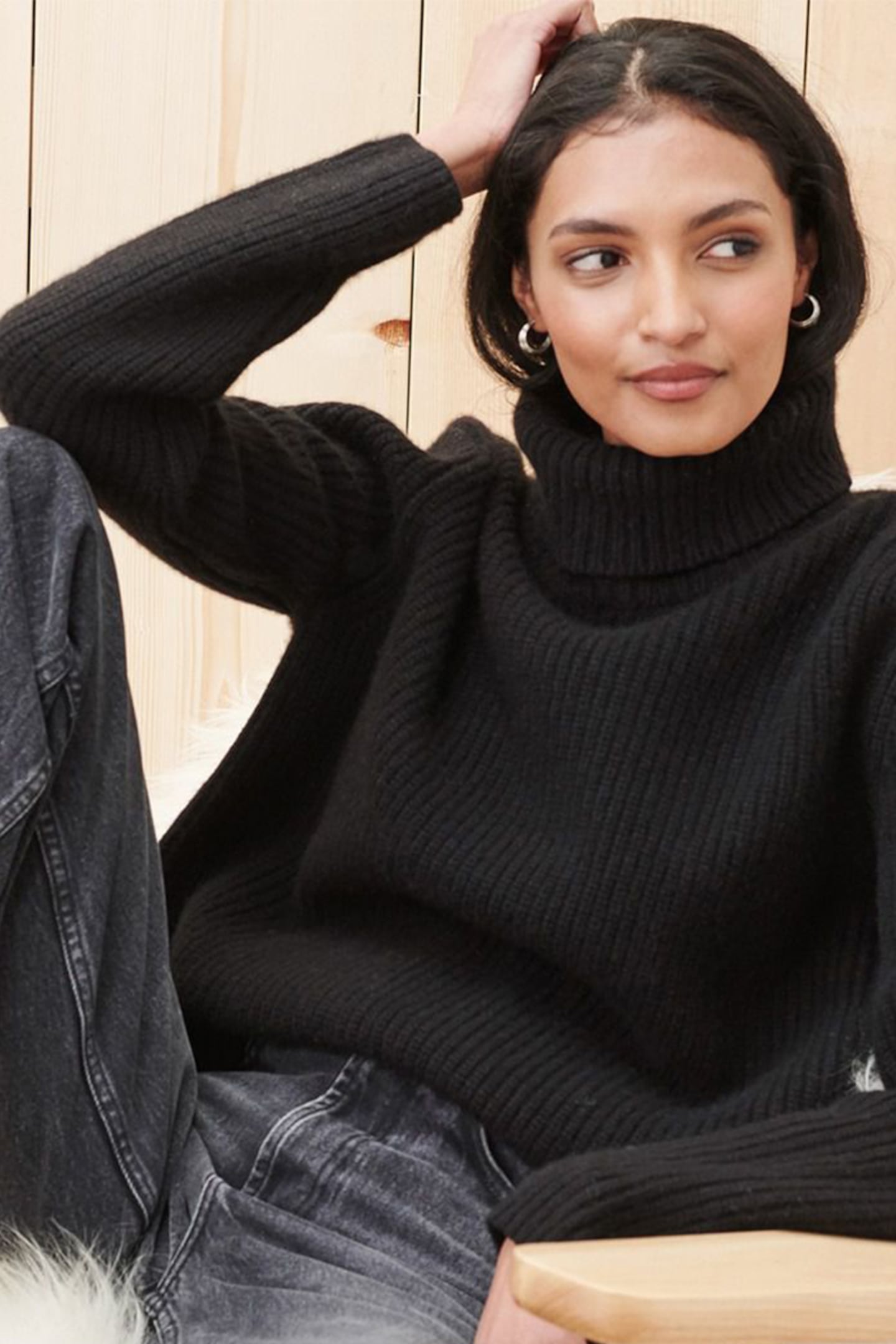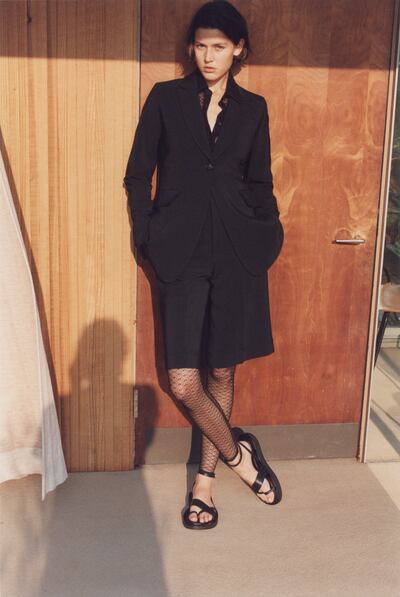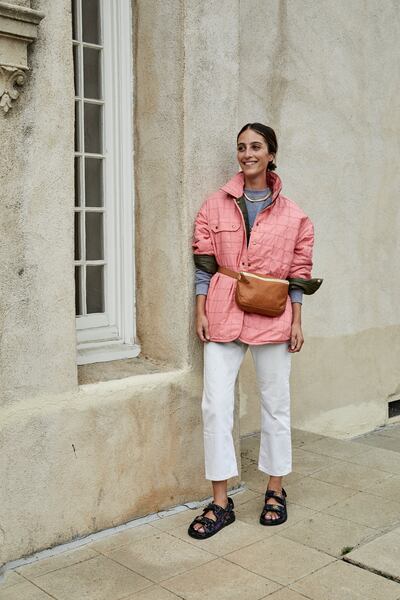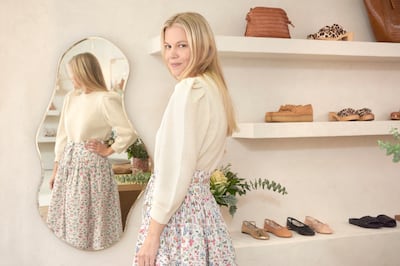
The Business of Fashion
Agenda-setting intelligence, analysis and advice for the global fashion community.

Agenda-setting intelligence, analysis and advice for the global fashion community.

When Los Angeles-based Jenni Kayne founded her namesake label in 2002, she was just 19 years old and set on designing the sort of fashion line that you’d find at then-cool stores like Fred Segal or Barneys New York. Throughout the 2000s, she staged runway shows and presentations at New York Fashion Week, establishing herself as a maker of California cool-girl separates but never really breaking through. By 2013, the line was generating only $3 million a year and was heavily dependent on wholesale partners to reach customers.
But the same year, Kayne, whose business is backed by her father, billionaire investor Richard Kayne, made a pivot that few might have expected from a laid-back California designer, whose label was often pegged as a vanity project. She hired retail executive Julia Hunter, a former investment banker who went on to work at Louis Vuitton and J.Crew, to help expand the label.
After seeing Kayne’s cream-washed house in Architectural Digest, Hunter knew a focus on the designer’s Californian-meets-Scandinavian aesthetic — which would sweep the home decor market over the next decade — could set the brand apart.
By 2018, after cutting ties with nearly all multi-brand retailers, lowering prices and re-merchandising Jenni Kayne’s four stores to include less third-party product, sales reached $8 million. By 2019, after adding more stores, they were $24 million, hitting $50 million in 2020, as the loungewear and home categories picked up after the pandemic struck. Last year, sales rose to $104 million, and are expected to exceed $150 million in 2022. The business is profitable.
ADVERTISEMENT
And Jenni Kayne isn’t the only label of its kind that’s thriving. The American “accessible luxury” market, occupying a space once squeezed between fast fashion and the very high-end, is now on an upswing after years of decline.
Since its emergence in the early 2000s, the category has catered to middle class shoppers trading up. But over the past decade, income disparity — the rich getting richer, and the poor getting poorer — made it less attractive when compared to cheaper options. While the pandemic only widened the gap, it also forced many consumers to change the way they shop: as life priorities changed, so did fashion priorities.
“Over [the pandemic], people did switch to wanting fewer, better things,” said Karla Martin, a managing director at Deloitte, adding that the rise in online shopping meant that many consumers were also “exposed to brands they may not have seen in stores.”
The market has also benefited from wealthier buyers happy to trade down for products with a sharp point of view. Some of the once-struggling leaders in the category — including Coach and Michael Kors — used the pandemic to reset, focusing more on profitability and distinctive designs, and less on sales volume driven by discounts. At Tapestry-owned Coach, for instance, revenue was $1.1 billion in its most recent quarter, ending in October 2021, up 27 percent from the same period in 2020 and 15 percent from 2019.
Inflation Backlash
Brands are also taking advantage of consumer frustration with the rising costs of high-end luxury goods — up, in some cases, nearly 20 percent during the pandemic alone. This value-conscious mindset has, in some cases, presented an opportunity for lower-priced labels that are held in a higher regard than fast fashion.
New York-based shoe line Loeffler Randall’s under-$400 heels — in particular, those topped with pleated bows — have been a late-pandemic hit. In 2021, sales at the brand more than doubled, reaching close to $30 million, and are on track to near $50 million in 2022, while remaining profitable. Co-founders Jessie Randall and Brian Murphy, who launched the business in 2004, said that $395 is their sweet spot, and while challenging to maintain from a cost perspective, is worth the extra planning.
“It’s not the cheapest, but it’s the nicest materials,” Randall said.
ADVERTISEMENT

Stephanie Danan, co-founder of California-based minimalist label Co, said that maintaining below-luxury prices has aided in the growth of its Essentials collection, which launched in 2018 and now makes up 60 percent of the business.
“Our customer is not this kind of super luxury-obsessed person, more somebody who is conscientious about how they’re spending their money,” she said. “They buy art and travel and buy their own real estate. They’re not waiting in line on Rodeo Drive.”
Amy Smilovic, the founder and creative director of New York-based label Tibi, said that she and her team price items based on how much they, as working professionals, would feel comfortable paying.
“We are at a place right now where we are doing pricing intuitively,” she said. “How much value is in it? How good does it make you feel? That means shoring up our business in every other area so that we can be flexible.”
“It’s that price-value thing,” added Elizabeth von der Goltz, Matchesfashion’s chief commercial officer, who carries Co. “For us, it’s brands that have a great design aesthetic, and that we’ve given the stamp of approval in terms of quality, fit and make.”
Point of View
Lower prices alone aren’t enough, however. Accessible luxury labels have often copped styles from true luxury lines instead of designing new things. And yet, history shows that the most successful, long-lasting brands are best known for their original creations, from Coach’s Bonnie Cashin-designed handbags to Tory Burch’s Reva flats. More recently, the runaway success of Telfar’s under-$300 embossed shopper has proven that a fashion item can still have genuine cultural cachet without being expensive.
Clare Vivier, the designer behind the made-in-California label Clare V. has dug into to the Frenchness of her brand — married to a Parisian, she speaks fluently and spends summers in the Loire Valley — using her colour-rich, adventurous-but-not-untouchable aesthetic to spread a sense of “joie de vivre” with $385 pastel-painted, snake-embossed cross-body bags and trucker hats screen printed with illustrations that say things like, “liberez les sardines,” inspired by the fish of the Ile de Re.
ADVERTISEMENT
She remains the majority owner of the business, which is profitable and generates upward of $20 million a year — doubling since 2015 — with 70 percent of sales coming from direct channels.
Distribution Smarts

As with high-end luxury goods, accessible luxury brands are relying more and more on direct-to-consumer channels, but they’re going about it differently than their large-scale predecessors, which have spent the last few years pruning store counts.
Jenni Kayne, for instance, has opened 13 stores thus far on a path to 50 (with some dedicated to home goods only), but they are small — around 1,500 square feet — and they start making money in less than six months. (Hunter said that customers that have shopped in-store at least once spend six times more over a lifetime than an e-commerce-only shopper, although online sales make up 70 percent of the business.) The retail expansion across the US has allowed the company to broaden the location of its customer base as well. Three years ago, 75 percent of sales were coming from California, now it’s only 25 percent. Today, wholesale — a partnership with Nordstrom — makes up just 3 percent of the business.
Not every company thinks going totally direct is right for them — opening physical stores and online marketing requires upfront capital — but controlling distribution is crucial. At Co, a focus has been on managing excess inventory in a way that is not damaging to the brand.
At the height of the pandemic, as many retailers stopped paying for orders, Danan and co-founder Justin Kern launched Co Archive, an Instagram shopping account where they release past-season items, one at a time, in a drop-like fashion.
“It looks good, it looks on-brand and helps us tap into a younger, even more aspirational customer,” Danan said. In 2020, the additional revenue — more than a million dollars worth of goods — also allowed them to avoid pandemic-related staff layoffs.
For Some, Bigger is not Better
Many of today’s most promising mid-priced labels are diminutive in size compared to the market leaders, although some believe they can reach that level of mass appeal.
Jenni Kayne’s Hunter said that she expected that it would hit $400 million in sales over the next three years, thanks to the launch of new sub-brands — including the skincare line Oak and the expansion of home, its fastest-growing category — with an eye on becoming a publicly traded company valued at $1 billion to $2 billion.

While perhaps not as lofty, Loeffler Randall, too, sees expansion in the brand’s future, especially in retail after opening its first store in New York’s NoLita neighbourhood in 2021. Last year, the company also took on its first investor, the Kemmons Wilson family office, whose minority stake will help fuel more store openings, although that cash currently remains untouched.
However, the kind of investment needed to drive extreme growth may not be as easy to come by as it once was.
“We looked at doing a private equity raise, but people are wary of apparel for a lot of reasons,” Hunter said, adding that while it’s nice to maintain control over the business — several senior-level executives have been granted equity in the business — they do see opportunity to fundraise, either through a private investor or a public offering.
Other brands, though, would rather stay smaller than they once were in the hopes of also staying nimble. Pre-Covid, Tibi was interested in selling off at least a chunk of the company as the business accelerated. But now, after shrinking its wholesale presence and streamlining operations during the pandemic, Smilovic would prefer to focus on less on overall growth and more on meaningful growth. Full-price sales, for instance, increased 235 percent in 2021 — but she’s less concerned with the top-line number.
“We’ve really reprioritised,” she said. “Cashflow is now totally different, and we’re no longer walking this tightrope.”
Accessible luxury brands like Coach and Michael Kors radically changed their approach to everything from logos to discounting to regain their old cachet with consumers. It’s working, but for how long?
The path to success for accessible luxury players is narrowing in the critical China market, but there is still room for brands able to overcome key obstacles.
The Los Angeles-based accessories label has been a well-kept secret in the industry, but founders Yang Pei and Stephanie Li are hoping to change that through new acquisitions, opening brick-and-mortar stores and using AI to speed up the design and production process.
Designer Carly Mark sparked conversation about what it takes to make it as an emerging designer in New York when she announced she was shutting her ready-to-wear line and moving to London. On Thursday she held her last sample sale.
To stabilise their businesses brands are honing in on what their particular consumer wants to buy, introducing new categories and starting conversations.
That’s the promise of Zellerfeld, a 3D-printing partner to Louis Vuitton and Moncler that’s becoming a platform for emerging designers to easily make and sell footwear of their own.